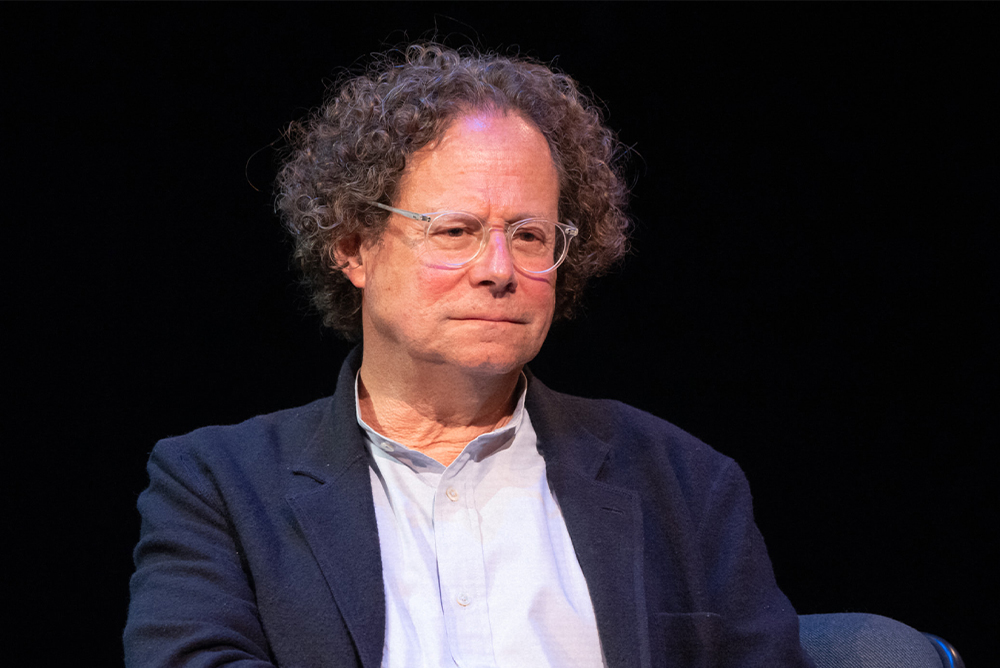
Photo by Aaron Perez.
Adam D. Weinberg is the director emeritus of the Whitney Museum of American Art. Before taking part in the Zócalo, Thomas Mann House, and L.A. Review of Books program “How Should Arts Institutions Navigate the Culture Wars?”—part of the two-day conference “Arts in Times of Crises”—Weinberg joined us in the green room to talk about museum gift shops, the old New York, and the joy in accident.
What is the earliest creative act that you remember?
When I was a youngster, I collected all kinds of things—rocks and shells and stamps. I consider that my first creative act because I learned about relationships, juxtapositions, connections, disconnections, building, making meaning, and the inability to make meaning. I would say this was the basis of my curatorial approach.
What’s one exhibition at the Whitney that surprised you?
I would say the current Harry Smith show. I knew bits and pieces about Harry Smith as a filmmaker, as a musicologist, as a sort of “Beatnik” person. And how the curators took these very diverse and ephemeral bits of his life and career and assembled them into a larger mosaic that became a kind of story of his creative acts. It was done brilliantly, both from an installation perspective and a storytelling perspective—gathering up these random bits of debris. I’m still learning from it, which is great.
Your calendar has been compared to a game of Tetris (by one of your assistants, on Instagram). What are the essentials one must make time for?
Quiet is probably the most important. Connections with family and people who have nothing to do with one’s career. At the going away party at the Whitney when I retired, I had said: I entered as Adam, became the director, and I’m leaving as Adam. It’s the reminder of the fact that there’s somebody who existed in an unofficial role before I played that official role; that’s the throughline of my life, not the museum director.
I’m discovering now unintended detours as opposed to planned detours. I see a sign and it sounds kind of interesting, and next thing you know, I’m following it. You don’t have the freedom to do that when your calendar is a game of Tetris. There’s not enough room in one’s life for serendipity, accident.
What is your favorite place to go in all of New York City?
I like wandering through the Lower East Side, and Chinatown. Probably because it reminds me of the New York that I knew long ago, which, in Manhattan, one doesn’t find as much anymore. You find it in parts of Harlem, and the other boroughs. But because of how much of my life tends to be centered in Manhattan, it’s a reminder of when there was a greater sense of community and life lived in the streets. Manhattan’s become more of a culture of private life and private property. And the communal parts of Manhattan—you find it in the parks, you find it on the subways, you find it on the buses. You don’t find it in the Ubers.
What’s your favorite museum gift shop?
MoMA is definitely the Amazon of gift shops, where you can get anything. It’s great and really well selected. But I like a lot of the smaller ones that are kind of surprising. I was just in the gift shop in the Albuquerque Art Museum, and had never even been to the museum until 10 days ago. And I thought here was this small museum gift shop and they had wonderful things. What I like is they’re not always in the expected places.



